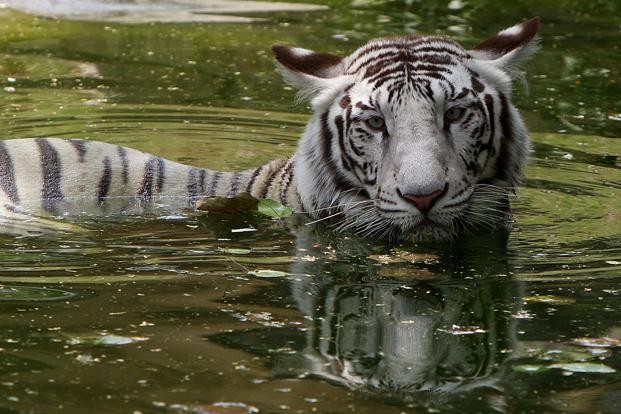
New Delhi: The Delhi zoo, a favourite among children and adults alike, is taking active steps to develop its infrastructure and animal care paraphernalia to emerge as a “model” for other zoological parks of the country.
The recent procurement of a gas anaesthesia machine by the zoo, training workshop for veterinarians by US-based experts and many animal exchange programmes are some steps in this direction, said zoo director Renu Singh.
“We are working on a war footing to make Delhi zoo a model zoo. We recently procured crucial animal care equipment and have also initiated many animal exchange programmes. We are also stepping up the park’s infrastructure,” she said.
“We are striving to convert Delhi zoo into a model zoo so that other zoological parks of the country take a cue from here,” she added.
Spread across 176 acres of land, the Delhi zoo is one of the most spacious zoological parks of the country. It is home to about 1,350 animals representing almost 130 species, apart from having a wide variety of indigenous and exotic birds. The zoo is also part of the conservation breeding programmes of the Central Zoo Authority.
On being asked which animals will be brought to the zoo as part of the exchange programme, Singh said, “We are hoping to bring in many animals, especially those we lack. Though many proposals were green-lit, many are still in the pipeline.”
“But we hope to acquire an ostrich, kangaroos etc soon,” she said.
Talking about ‘model infrastructure’ in a zoological park, animal care expert Jessica Siegal-Willott said it is important for visitors to connect with animals and not just see them as exhibits.
Jessica, who visited the Delhi zoo recently for a training workshop, said giving ‘demo talks’ can be the first step in this regard.
“Having a fulfilling experience and striking a personal connection with animals is what leads to care and conservation. The zoo keepers should have playful interactions with visitors and also educate them about animal protection,” the supervisory veterinary medical officer at Smithsonian Institution National Zoological Park in Washington told PTI.
“In the US, we have donor events wherein one can win a tour to a vet hospital. Such initiatives help the commoners understand the animal community better,” she said.
Another zoo official said such steps were being taken to rid the zoological park of the “bad publicity” it received over a spree of animal deaths earlier this year.
“The Delhi zoo received flak over the avian influenza outbreak last year. We have since taken every measure to upgrade the infrastructure, especially with respect to animal care equipment. Procuring a gas anaesthesia machine is a case in point,” he said.
Budhan S Pukazhenthi, reproductive physiologist at the Smithsonian Conservation Biology Institute, said such a machine was a versatile option for safely working with animals.
“But in majority of cases, gas anaesthesia is a supplement to injectable anaesthetics. For example, in the case of large, dangerous animals, veterinarians fist must immobilise or anaesthetise the animal using a combination of injectable anaesthetic drugs delivered via a remote dart or injected in a squeeze cage,” he said.
“Once the animal is safe to handle, the duration and plane (depth) of anaesthesia can be prolonged using gas anaesthesia. In combination with good monitoring this provides the most flexibility for attending veterinarians to perform longer procedures,” he explained.


.jpeg)

